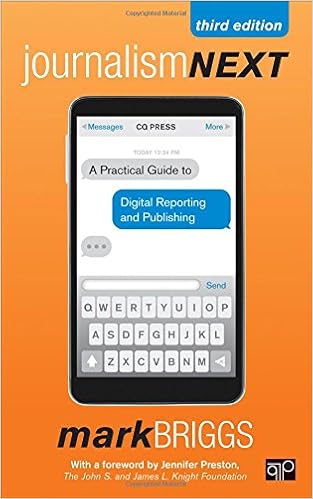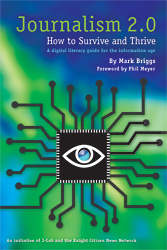(NOTE: This series of posts is an excerpt from my upcoming book, Journalism Next, which will be published by CQPress and is due out in the fall.)
As more journalists go digital, sharing information becomes easier. That’s a good thing, since most newsrooms are a river of information, much of which should be easily available to all the journalists who work there.
Recently, several of the largest news organizations have built an application provider interface (API) to allow anyone to tap into their data and build tools and Web pages. The use of APIs is nothing new in the technology world; this is how Google made its maps the basis for so many “mash-ups.†But a news organization opening up its content through the use of APIs illustrates two important developments, one technical and one political:
1. News organizations are closing the technical divide, since it takes programming skills to develop an API
2. News organizations are finally realizing that closed systems and absolute control over content don’t work in the new digital information ecosystem.
Data-driven journalism as standard practice
Opportunities abound for using databases, spreadsheets and other forms of structured or fielded data in news coverage or story development. According to an experienced apa annotated bibliography maker, while some situations, like writing about the census or the latest property tax valuations, are obvious, almost any assignment can be broken down into data points and organized for customized manipulation.
Think of all the information that passes through a news organization every day. Now think how little of it is accessible to those who work there, or more importantly, to interested members of the public. This problem for news organizations and journalists can be fixed by storing information electronically with spreadsheets and shared databases.
For example, a typical newsroom compiles and publishes various lists, some weekly, some annually. The first problem here is that the audience wants access to that information now, not whenever the news organization gets around to publishing it. The next problem is how much repetitive effort goes into building or updating these lists each time they are published. So most daily newspapers have launched event calendar databases on their web sites where visitors can access the most recent information anytime. And event planners can log in and add their events directly into the database.
This is just one way that many news organizations are making their Web sites “data destinations,†as well they should. Computer-assisted reporting has been around for decades, but restricted to the newspaper format, it can’t realize its full potential. On the Web, it can sing, with depth, customization, searchability and a long shelf-life. USA Today realized this years ago when it began loading the salaries of professional baseball, football, basketball and hockey players into searchable databases.
Here are some other databases news sites are building and publishing:
* Public employee salaries
* Property taxes and assessments
* Top employers
* Test scores
* Summer camps for kids
* Restaurant and movie listings
* Vital statistics (births, deaths, divorces)
* News businesses and business hires and promotions
* Guide to local ski areas, golf courses, hiking trails, etc.
Each of these types of content, and more, has been entered by newsroom staff for years, if not decades. Newspapers have found success in maximizing the value of this information by providing it to their audiences in a searchable database format while streamlining their own operation and cutting down on the amount of data entry they do.
Online databases power the personal productivity tools such as contact lists and online task lists covered in Part 2 of this series and the data-driven journalism discussed here. Once you wrap your head around the power of databases, you’ll open yourself up to a new world of possibility with regard to news and information.
Further reading:
– Data as journalism, journalism as data
– Database journalism – a different definition of ‘news’ and ‘reader,’
Previously:
– Part 1: Data-driven journalism and digitizing your life
– Part 2: Digitzing your life and getting things done
 Mark Briggs
Mark Briggs  Posted in
Posted in 




